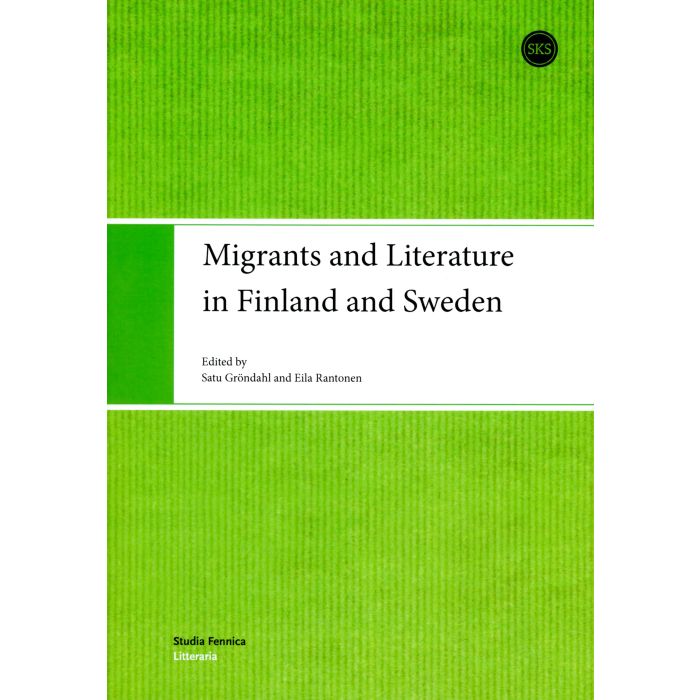Vi använder cookies för att göra din upplevelse bättre. För att följa det nya direktivet om e-integritet, behöver vi be om ditt medgivande att sätta cookies. Läs mer.
Migrants and Literature in Finland and Sweden
Special Price
36,00 €
Normalt pris
45,00 €
I lager
SKU
978-952-222-992-2
Migrants and Literature in Finland and Sweden
Ed. Satu Gröndahl and Eila Rantonen
Suomalaisen Kirjallisuuden Seura
Studia Fennica: litteraria 11
Nortderstadt 2018, 235 pp.
Ed. Satu Gröndahl and Eila Rantonen
Suomalaisen Kirjallisuuden Seura
Studia Fennica: litteraria 11
Nortderstadt 2018, 235 pp.
Migrants and Literature in Finland and Sweden presents new comparative perspectives on transnational literary studies. This collection provides a contribution to the production of new narratives of the nation. The focus of the contributions is contemporary fiction relating to experiences of migration.
When people are in motion, it changes nations, cultures and peoples. The volume explores the ways in which transcultural connections have affected the national self-understanding in the Swedish and Finnish context. It also presents comparative aspects on the reception of literary works and explores the intersectional perspectives of identities including class, gender, ethnicity, ‘race' and disability.
This volume discusses multicultural writing, emerging modes of writing and generic innovations. Further, it also demonstrates the complexity of grouping literatures according to nation and ethnicity. This collection is of particular interest to students and scholars in literary and Nordic studies as well as transnational and migration studies.
When people are in motion, it changes nations, cultures and peoples. The volume explores the ways in which transcultural connections have affected the national self-understanding in the Swedish and Finnish context. It also presents comparative aspects on the reception of literary works and explores the intersectional perspectives of identities including class, gender, ethnicity, ‘race' and disability.
This volume discusses multicultural writing, emerging modes of writing and generic innovations. Further, it also demonstrates the complexity of grouping literatures according to nation and ethnicity. This collection is of particular interest to students and scholars in literary and Nordic studies as well as transnational and migration studies.
| Förläggare | Finska Litteratursällskapet |
|---|---|
| ISBN | 978-952-222-992-2 |
| ISSN | 1458-5278 |
| Publikationsserie | Studia Fennica: litteraria |
| Sarjanro | 11 |
| Tryckt (år) | 2018 |
| Publikationens omslag | Mjuk pärm |
| Bandtyp | Häftad |
| Språk | engelska |
| Vetenskapsgrenar | Litteraturvetenskap |


